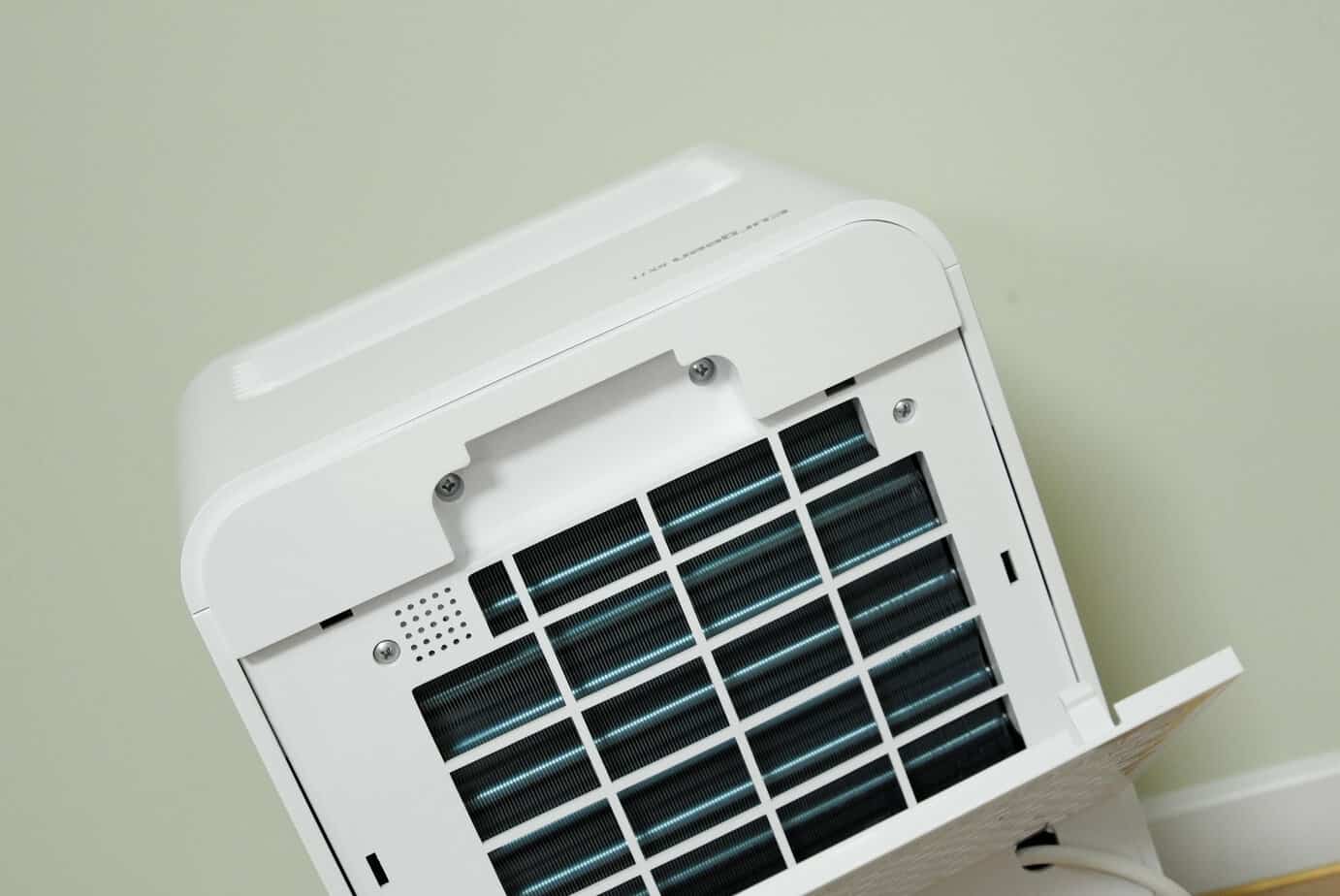Living in an environment with too high or too low humidity levels can be incredibly uncomfortable and even stimulate mold development. As such, having a dehumidifier can be very handy, as long as you know how to use it correctly.
Once the humidity level reaches around 45%, it is time to turn off your dehumidifier. If your dehumidifier doesn’t shut down manually, you should also turn it off when the air feels dry, when the machine begins to malfunction, or after a set period of 12 hours.
Although we know a few situations when it would be best to shut down your dehumidifier, there are still a lot of special circumstances within each situation, such as what counts as a malfunction in the machine. To help you better use your dehumidifier, let’s look at dehumidifiers and when to shut them down in detail.
Why should I turn off my dehumidifier?
To understand why and when you may have to turn off your dehumidifier, let’s first explore what humidifiers are and what they do for your home.
Dehumidifiers are machines that help to maintain humidity levels in the air. There are several reasons why you might want to use a dehumidifier, including the fact that certain areas will experience high humidity levels periodically.
High humidity can promote the growth of mold and airborne allergens, leading to issues such as red eyes, skin rashes, and even allergic reactions. High humidity can be even worse for those with severe allergies or respiratory issues. As such, it would be advantageous to have a dehumidifier nearby.
On the other hand, having a dehumidifier can also be quite tasking. It requires regular maintenance since you must empty the tank regularly; otherwise, it won’t even run. It can also require a lot of energy and money to run, so you must learn when it is best to turn off your dehumidifier.
When should I turn off my dehumidifier? (In detail)
A lot of factors go into when you should turn off your dehumidifier in the situation that it cannot turn off automatically when it reaches 45% humidity. One factor is the length of time the machine has been running.
After a certain number of hours
In order to make sure that your machine is in tip-top shape and that it won’t break down easily, you should turn it off after running it for a certain number of hours per day (if it doesn’t do so already). It would be best if you let it rest for around 12 every 24 hours, depending on the room’s size and the air’s humidity level.
However, this may not be the case for all types of dehumidifiers. For example, suppose you have a good-quality dehumidifier with a continuous drainage system. In that case, it should be safe to leave on for longer since there’s minimal risk of flooding or water overflowing.
When the air begins to feel dry
Low humidity levels can be just as bad as high humidity levels. If you don’t have a dehumidifier that turns off by itself when reaching a certain level, you have to keep watch and turn it off when the air feels dry. Dry air is a telltale sign of low humidity and creates the perfect environmental conditions for many types of viruses to grow.
There are numerous signs of dry air that you should know. For example, if you have abnormally dry lips and skin that is consistently itching or flaking around the crevices, it could indicate low moisture levels in the air.
Additionally, other signs include an increase in static electricity whenever you touch a metal object or surface. Dry air can also cause clothing and other fabrics to stick more closely together, making it difficult to perform tasks like putting away the laundry.
Whenever you notice any of the above signs in your home, turn off your dehumidifier and let some moisture accumulate in the air. After around 12 hours, you can turn on your dehumidifier again to reduce humidity levels.
When the dehumidifier malfunctions
If your dehumidifier begins to malfunction, you need to turn it off at its source. Malfunction can mean that it stops filling its tank with water or looks like no water is draining using the drainage system. Another sign of malfunction is when it is noticeably removing too much moisture from the air at a fast rate.
After noticing signs of breakage, don’t just shut it down using the turn-off button. You actually need to disconnect it from the electric network. Disconnecting will help to prevent any electrical issues while a professional or expert attempts to learn what might be wrong.
If you need to replace the filter
A dehumidifier should come with a filter to help remove all of the dirt, dust, and other debris from the air before it flows through the machine. You will need to replace the filter at least once every 12 months. Every time you replace the filter, you must actively turn off the dehumidifier to prevent any issues or accidents.
Cleaning the dehumidifier
Although the dehumidifier is responsible for maintaining the humidity levels, you yourself are responsible for looking after your dehumidifier and keeping it clean. You need to clean your dehumidifier at least once weekly, though this can differ depending on the manufacturer.
To clean your dehumidifier properly, remove all the parts that you can remove safely and clean them by hand. Use a brush with thin bristles to remove the dust from the coils, and use a cloth to remove any tougher debris. To clean the water container, you can use a detergent and a scrub to scrub it down.
Why does my dehumidifier keep shutting down?
Sometimes, your dehumidifier can turn off without you personally doing anything. In this section, let’s look at a few reasons why your dehumidifier decides to turn off on its own other than reaching the right humidity levels.
Broken Sensors
One reason why your dehumidifier may turn off automatically is due to a fault in the humidity sensor. If the sensor has an issue, it can turn off even before it reaches the right humidity levels. Similarly, specific brands of dehumidifiers also have a thermistor that works the same way and can also malfunction.
Blocked Coils
After using your dehumidifier for some time, there may be some build-up of dust and other debris on the coils. Without cleaning, it can result in lower quality air leaving your dehumidifier. It can also result in the dehumidifier working much harder to churn out the same results, leading to more energy usage and your dehumidifier occasionally turning off.
Frequently asked questions
Should I leave the dehumidifier on 24/7?
Dehumidifiers require a lot of electricity to run, so if you leave the dehumidifier on for 24 hours, you will definitely see it in your utility bills. In a financial sense, you should not leave it on the whole day. Even if money is no object, you should still not leave it on as it could leave the air too dry.
Can I leave a dehumidifier on overnight?
Health-wise, there’s no problem with leaving your dehumidifier running overnight. However, in terms of convenience, it depends on the unit. If your dehumidifier has a continuous drainage system or a substantial tank capacity, you can leave it on since it becomes unlikely for your tank to overflow.
In which season is the best time to use dehumidifiers?
The most suitable season for using your dehumidifier is during summer, when humidity levels are generally higher. In the middle of summer, the air tends to hold a lot of moisture, making it uncomfortable without a dehumidifier. Regarding the best time of day, it is usually best to run the machine during mid-afternoon when the sun is at its hottest.
Image source: “Xiaomi Smart Dehumidifier” by TheBetterDay is licensed under CC BY-ND 2.0.

